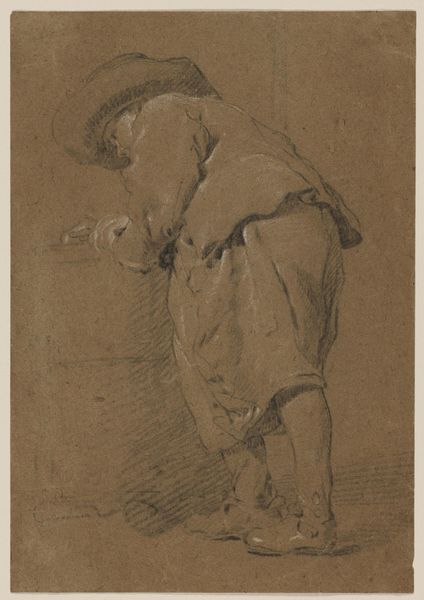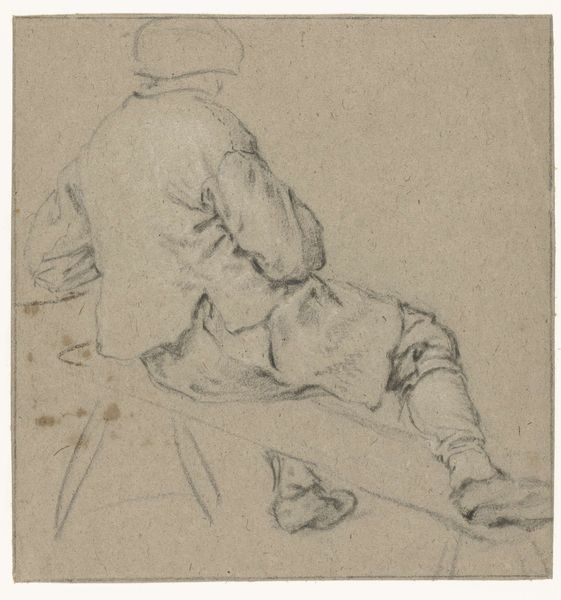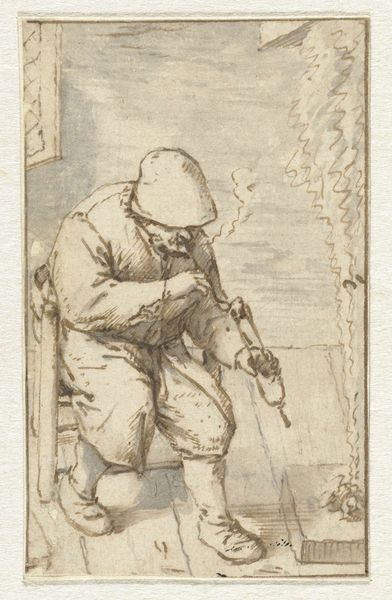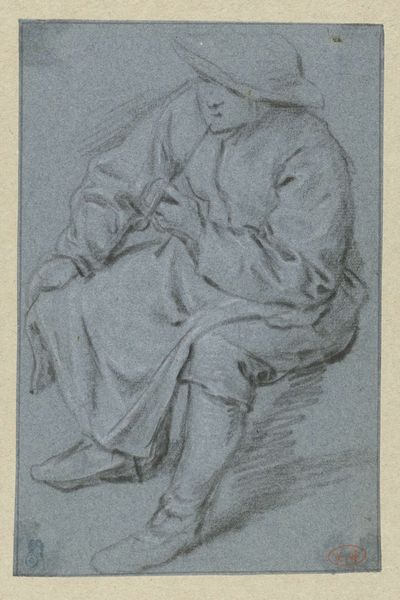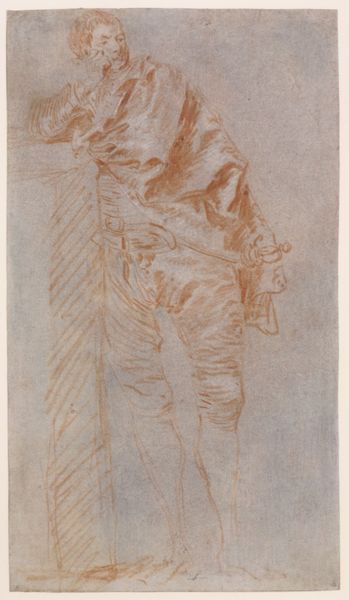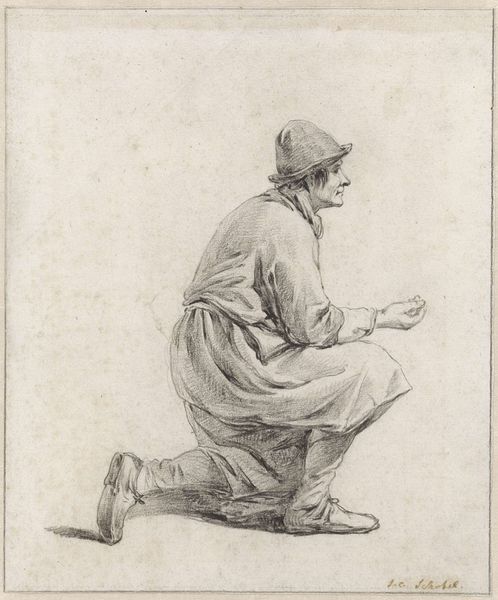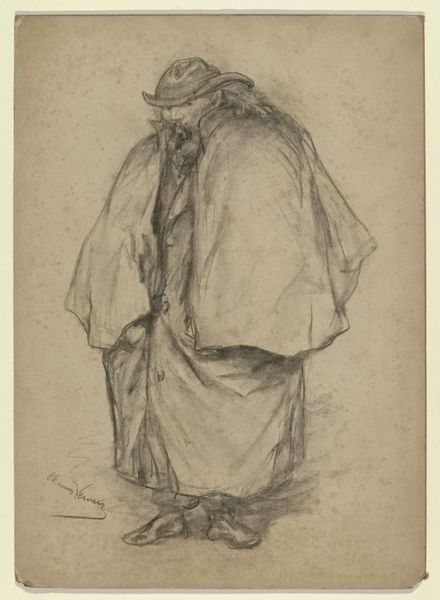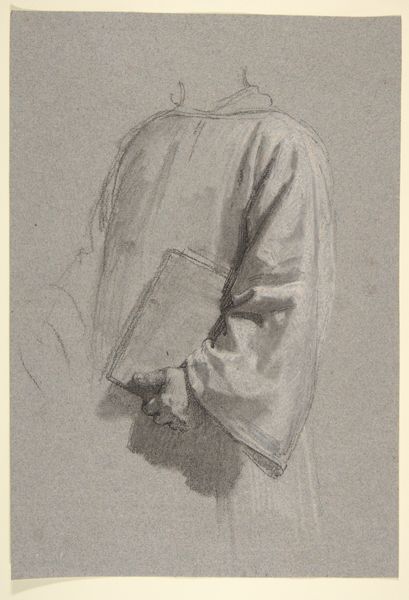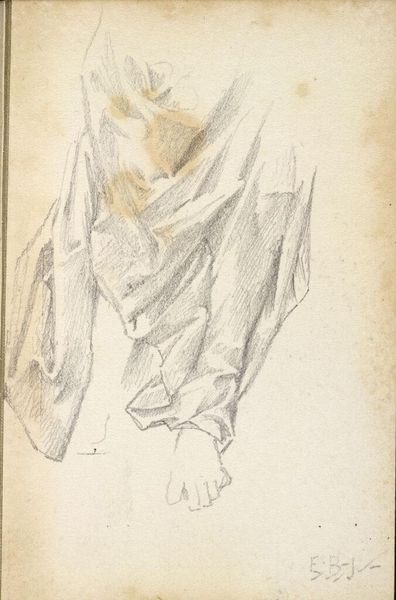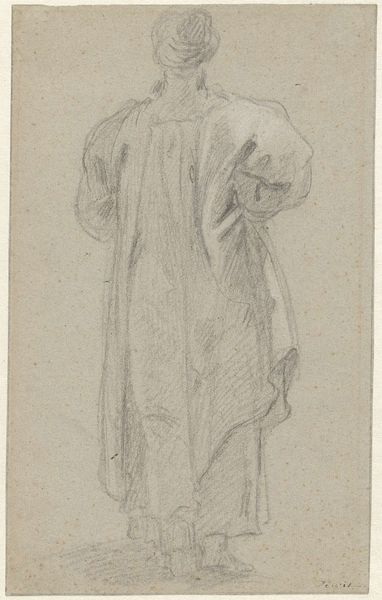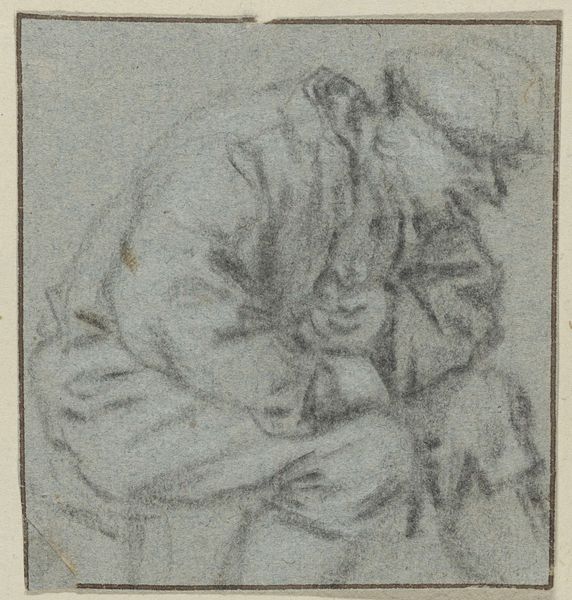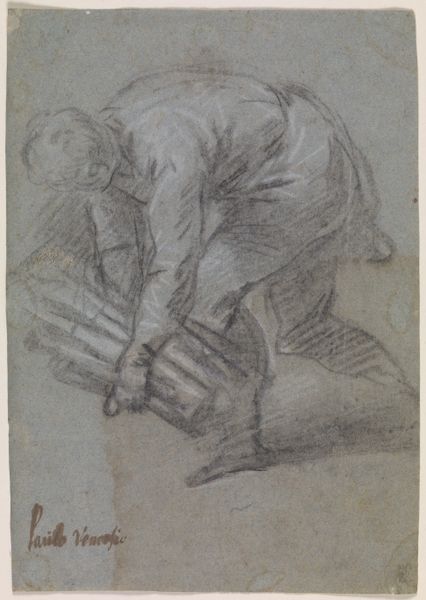
drawing, pencil
#
portrait
#
pencil drawn
#
drawing
#
dutch-golden-age
#
pencil sketch
#
pencil drawing
#
pencil
#
portrait drawing
#
genre-painting
Dimensions: height 78 mm, width 74 mm
Copyright: Rijks Museum: Open Domain
Curator: Before us, we have a pencil drawing from Adriaen van Ostade, created sometime between 1620 and 1685. It's titled "Zittende man, voorover gebogen" or "Sitting Man, Bent Forward." Editor: It's instantly melancholic. The man's posture, bowed head, the soft shading...it speaks of exhaustion, maybe even defeat. You feel an immediate sense of empathy. Curator: The beauty here, to me, is in the universality of the posture. Across centuries and cultures, this slumped pose signifies dejection. Ostade, intentionally or not, taps into a deep well of shared human experience. His hat conceals his identity while simultaneously signaling labor, class, daily struggle. Editor: Precisely! Consider the socio-economic context. The Dutch Golden Age was booming for some, but many lived precarious lives. This image, in its seeming simplicity, becomes a powerful document of working-class life and resilience amidst hardship. The downward gaze, for me, becomes a symbol of silent protest, the weight of societal expectation made visible. What kind of interior struggle led this person to be hunched? Curator: Perhaps a reflection of societal pressures? Van Ostade often depicted scenes of everyday life. I read this pose more as contemplation than defeat, an emblem of the laboring classes reflecting on his position within society. The folded hands may signal rest after toil, a moment to recover for those without the privileges that made life easy. Editor: Even a moment of rest can be political. Who is afforded such rest, when and where? I agree his hands communicate a powerful sense of human toil. The drawing style adds another layer, no color. Was he alone? His simple clothes also feel symbolic and represent lack of opportunities. How far could he actually move up? Curator: It seems that while simple, his artwork encourages reflection upon the symbols of class, and even resistance against the challenges in life. The bowed posture invites us to feel his positionality, making an image about seeing that transcends simple rendering. Editor: Right. And in viewing the history through this image, the symbolic image makes tangible an everyday humanity we can carry into current struggles against inequities, visible even today.
Comments
No comments
Be the first to comment and join the conversation on the ultimate creative platform.
